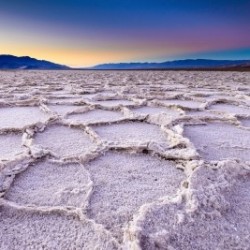
One of the most highly-traded items in ancient times can now be found at every dinner table in America. In fact, the word “salary” is derived from what Roman soldiers were once paid: they were paid with salt. Historically, salt has made a deep impact on society, elements of which can be found in medicine, agriculture, transportation, religion and the culinary arts. However, the salt that was used over 100 years ago is nothing like the salt sitting in our pantry today.
The Table Salt of Today
Nearly all of the table salt today can technically be classified as “sea salt.” Evaporation of sea water or salt water lakes can be used to derive salt. It can also be extracted from deep salt mines. Since the salt mines were once the ocean floor before Earth’s plates shifted, companies can still label it “sea salt.” After the salt is harvested, it typically goes through a bleaching process to remove any impurities. Bleaching in turn strips away all of the natural trace minerals. These trace minerals include calcium, potassium, sulphur, magnesium, iron, phosphorus, iodine, manganese, copper and zinc. Since the 1920s, American salt companies have added iodine in an effort to prevent iodine deficiency and birth defects. To prevent clumping, additives like aluminum derivatives and sodium ferrocyanide are added, as well. The non-clumping agents allow the salt to be ground to a fine texture which can easily slip through a salt shaker.
A Rainbow of Salt
Not all salt undergoes the same process. There are some unrefined salts that maintain the natural trace minerals from their environment. These mineral salts are easy to identify by their brilliant color. Gray salt gets its color from the clay off the coast of France. Black salt’s color comes from the volcanic remains of Hawaii. Indian black salt is pinker and has a sulfuric flavor. Pink salt commonly comes from the Himalayans. HimalaSalt™ is a chemical-free, organic Himalayan salt sold across the world and available at all Peoples locations. Hawaiian alaea salt is a red-pink color due to the iron oxide content from volcanic clay. Premier Research Labs makes a blend called Pink Salt, which is a composition of solar-evaporated Mediterranean sea salt and Hawaiian alaea salt. Salt is by no means limited to these colors and can differ according to region and minerals present. Some companies dye bleached salt to appear mineralized, so it is best to read the label! Each authentic type of mineral salt has a slight variation of taste, but they all can be used in your culinary adventures.
Salt and Health
Everything from our nerves to our muscles is dependent on salt consumption. However, processed and fast foods are already high in sodium. The Center for Disease Control and Prevention recommends no more than 1,500mg (1.5g) to 2,300mg (2.3g) of salt per day depending on your age, race and health status. There is some controversial debate about salt intake that was published by the Journal of American Medical Association. The article concludes that high salt intake may not be linked to hypertension and cardiovascular disease as previously understood. Both sides of the literature should be taken “with a grain of salt” and discussed with your dietician or medical practitioner.
Conclusion
Salt continues to make an impression on our lives today. It is a crucial nutrient to maintain life. Unrefined salt is free of bleach and additives while naturally retaining essential trace minerals. We can use mineral salt as a healthy substitute for table salt in recipes or sprinkled on cooked food to enhance the flavor.
by Erin Lyon, Wellness Specialist
References:
http://www.cdc.gov/salt/
http://jama.jamanetwork.com/article.aspx?articleid=899663
http://www.naturalnews.com/026080_salt_sodium_health.html
http://www.globalhealingcenter.com/natural-health/iodine-in-salt/
http://www.saltinstitute.org/health/overview/
http://science.howstuffworks.com/innovation/edible-innovations/salt1.htm
